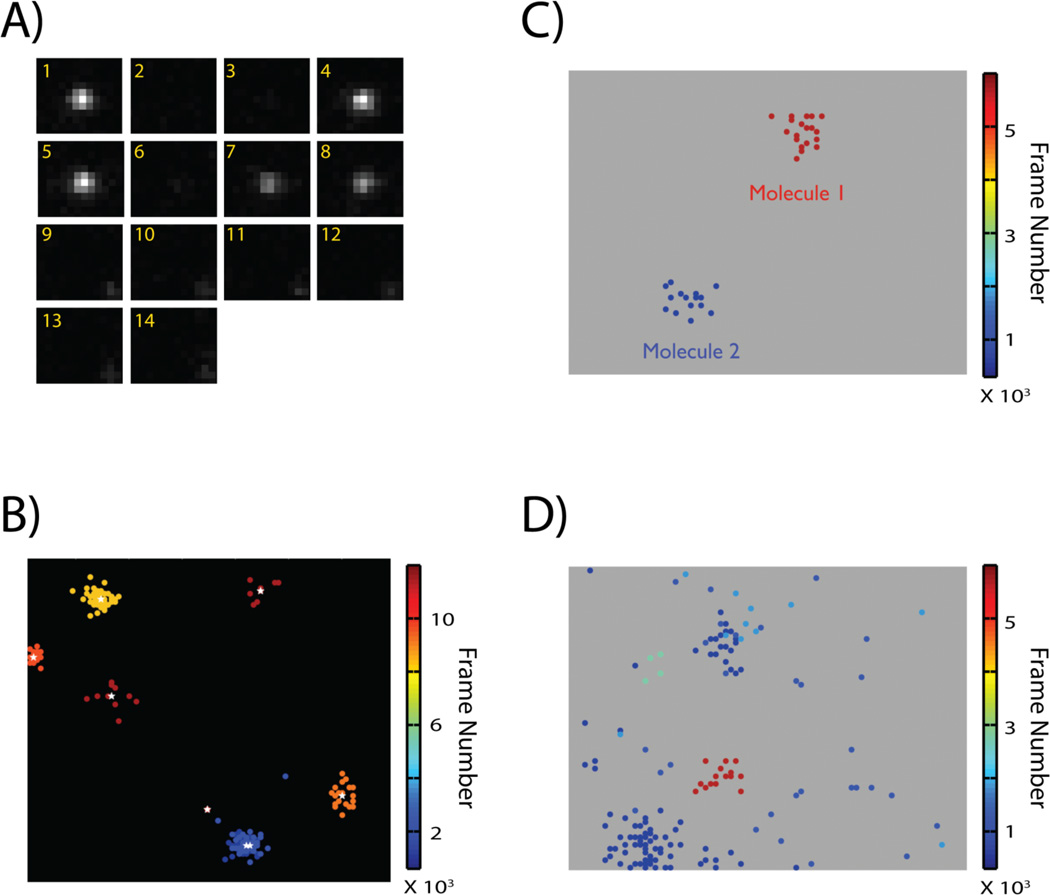Figure 2.
A: A single molecule appears multiple times punctuated by variable dark intervals before it is terminally photobleached. The image frame is indicated in yellow at the top right corner of each sub-image. B: Image of single molecule peaks localized in a PALM experiment. Peaks are color-coded based on their time of appearance during the course of the experiment. Stochastic variation in photon count during individual appearances results in the spatial dispersal of the estimated positions for the multiple appearances of a single molecule. Consequently, in a compiled super-resolution image, a single molecule appears as a cluster of peaks. Peaks arising from the same molecule appear within a time-window, and can be assigned to a single molecule if the molecules are sparsely distributed and the individual clusters are well separated. The actual position and localization uncertainty of the molecule can be calculated as a weighted average of the positions and localization uncertainty of the individual peaks in the cluster (white asterisk represents estimated position of single molecule from the cluster of peaks). C: Cluster of peaks arising from two molecules can be easily distinguished if they are spatially and temporally well separated. D: Localized peaks from a sample with densely labeled fluorescent molecules. Grouping of cluster of peaks and assigning them to single molecule is complicated by the smaller spatial and temporal separation of peaks belonging to different molecules. Images adapted from Reference [23].

